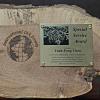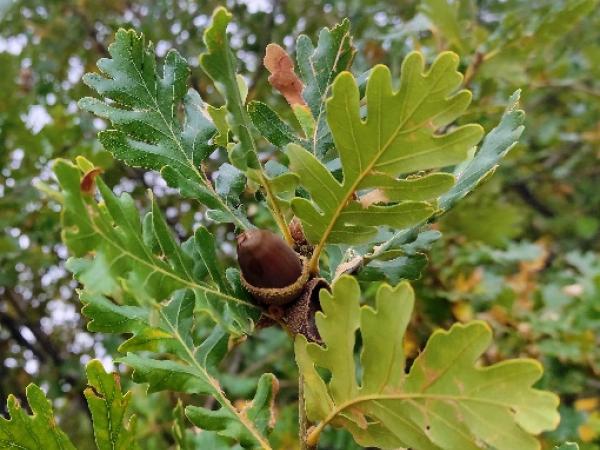Editor's Picks
Plant Focus
Back in September 2012, the UK’s BBC TV’s website reported on the recovery of a 5,000-year-old, 44ft (13.4m) Fenland Black Oak, or bog oak as it is called locally, which had been found buried in farmland in Norfolk, England. This was not a rare occurrence in East Anglia as it is known to have a high concentration of bog oak in its farmland. It was the length and condition of the log that set it apart and made it newsworthy.
Bog oak has long been an important feature of the fen landscape. Drive along any fen road and you are likely to see piles of black wood. It comes from trees that fell thousands of years ago and were buried and preserved in peat bogs. They lay beneath the surface, undisturbed in the acidic bog conditions, until the fens began to be drained. Then, as the peat dried out and shrank, the tree trunks became gradually closer to the surface of the soil.

Over the years the bog oak has been an important asset for the farm workers and local villagers. Arable fields are regularly ploughed and as the peat dries the bog oak rises to the surface. The blackened oak trees were lifted out and, after stacking and drying, were cut and used for fuel on open hearths or in ranges. Until quite recently, when central heating became common, the woody smell of burning bog oak was common in the villages. The better pieces of bog oak could be valuable for the fen farmer and there was and still is a good market for those pieces that could be made into furniture. Other craftsmen use it to make homewares and jewelry.
It was interesting to find out that the name attributed to the tree, bog oak, is a UK vernacular word along with black oak. With my limited knowledge of oaks from around the world, I had always thought that black oak was found in the USA and was associated with the Red Oak group (Section Lobatae). It is in fact a common name for Q. velutina, a species closely related to Q. rubra. That just goes to show I have an awful lot to learn.
Bog oak is a catchall name for partially fossilized wood, although most of it, as its name implies, originates from oak trees. The origins of this ancient timber are a mysterious and wonderful thing. Thousands of years ago, swamps, fens, and bogs were often surrounded by huge, primeval forests full of massive oak trees. Due to storms, floods or other natural events, these trees would sometimes fall into these adjacent wetlands. Over the years the peat reacts with the tannins in the oak and preserves the wood.
As to its cost, it has to be among the most expensive timbers in the world. It is at least seven times more expensive than today’s English oak, Q. robur.

My mind wandered and I found myself asking “where does the word bog come from?” It seems that the English adapted it from the word bogach, which is the term for sodden peatland in Gaelic. The earliest known use of the noun bog is in the early 1500s.
Since researching and writing this piece I have purchased a very small piece of bog oak. From this I plan to turn an item which I will offer to the IOS to use in whatever way they choose.
The tree mentioned in the initial paragraph was lifted, kiln dried, and transformed into timber. The timber was then made into a long table. You can read more about it on the website of The Fenland Black Oak Project.
















